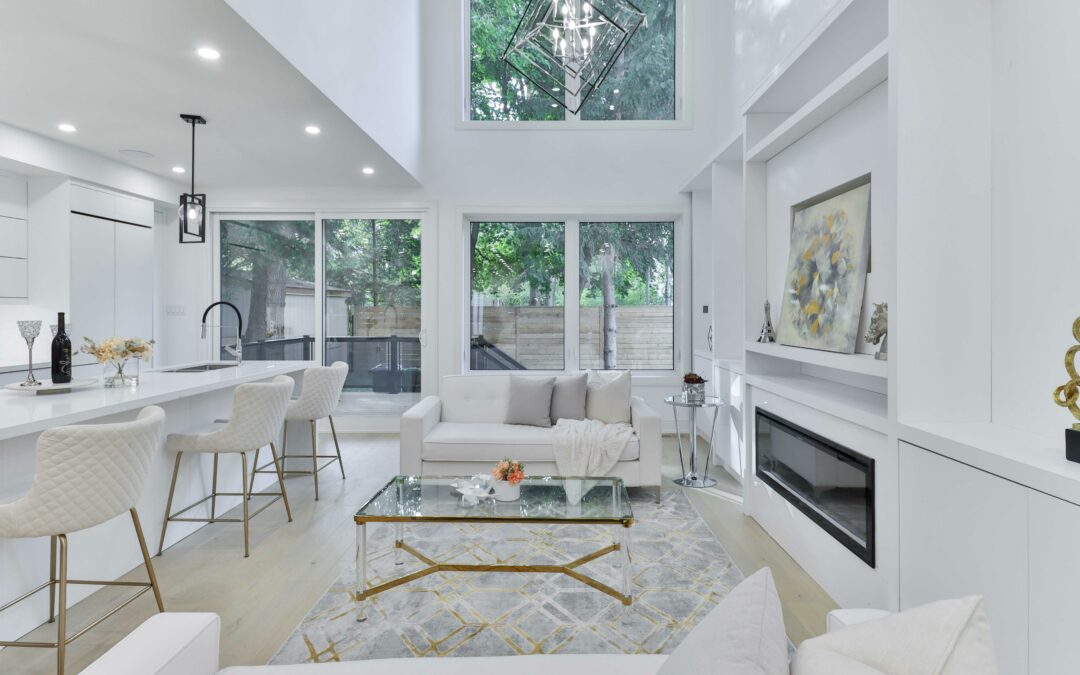Let There Be Light – How Natural Daylight Can Improve Your Home and Health
Being indoors doesn’t have to mean disconnecting from the natural world. By bringing daylight into your home through smart design choices, you can stay connected to the rhythms of nature and gain multiple health and home value benefits. This article will explore practical daylighting strategies and how they can positively impact your well-being and property worth.
Maximize Windows for Abundant Light
One of the most reliable ways to get bright natural daylight into your home is through large windows. The size and placement of windows are difficult for capturing daylight. Face windows north, south, east, and west – but avoid the harsh western light in the afternoon. Consider skylights too. They reflect light further into the home. Maximize window space in rooms used most during the day like kitchens. Large windows not only make rooms feel brighter and fairer but research shows they control depression and boost mood. Buyers also prefer homes with an abundance of natural light.
Use Glass Doors and Transom Windows
Glass doors are another way to expand the window surface area without breaking the bank. They let light pour through while connecting indoor and outdoor spaces visually and environmentally. Consider glass French doors or sliders for the rear of the home. Transom windows above doors supplement lighting too. Place them between rooms or above interior doors for a daylight boost throughout the home without extra construction costs.
Implement Light Shelves and Roof Windows
If you lack big windows or the home gets minimal natural light, explore alternative daylighting tactics. Light shelves and roof windows/skylights bring welcome illumination deeper inside. Light shelves are horizontal or angled overhangs mounted right above windows and act as extra reflectors bouncing light further into rooms. Roof windows and skylights creatively channel daylight from high up into hallways, laundry rooms, and other dark zones to make them more pleasant spaces throughout the day.
Create Bright, Sunlit Spaces with White Paint
Light-colored or white paint not only makes spaces feel bigger but also bounces what little sunlight enters further around. Light colors reflect 80-90% of luminous flux compared to just 5-30% for darker shades. Pairing white walls with abundant windows creates bright, airy interiors mimicking the outdoors. Sunlit, cheerful spaces have been shown to lift mood and productivity too. For resale, neutral light finishes appeal more widely and don’t date a home like trendy colors potentially could.
Let Nature In with an Outdoor Room
For a true indoor-outdoor experience, build a sunroom, or three-season porch extension to open the living space to the elements. Floor-to-ceiling windows and sliding doors dissolve the barrier between indoor and outdoor realms, letting in an abundance of natural light and nature’s calming scenes. Outdoor rooms add extra sun-drenched living areas, raise control appeal, and have become a popular convenience for families. Even a basic uncovered deck boosts light levels inside.
Conclusion
Incorporating fresh air, natural light and landscape views into home design is a simple way to mentally and physically reconnect to nature’s benefits indoors. Day-lighting can make living spaces feel healthy, uplifting, and valuable for home enjoyment or real estate investment. By maximizing windows, installing skylights, or incorporating outdoor rooms, homeowners can bring the outdoors inside for well-being and property worth.
FAQs
Q1: How much will daylighting strategies add to my home’s value?
Ans: Natural lighting is one of the top features buyers look for. Strategies like larger windows, skylights, and outdoor living spaces could increase a home’s worth by 3-5%. Proper daylighting also makes rooms feel brighter, and more open and appeals to a wider buyer pool.
Q2: Will larger windows compromise energy efficiency?
Ans: With smart window placement and the right windows, daylighting need not mean higher bills. South-facing windows allow winter sun in but block summer heat. Strategic overhangs prevent excess solar gain. New double or triple-glazed windows provide great insulation. Proper sealing and weatherstripping also maintain a tight building envelope.
Q3: How can indoor plants maximize natural light benefits?
Ans: In addition to their purification qualities, houseplants act as natural light reflectors. Their green leaves bounce daylight deeper inside. Pair plants with skylights or trimmed with reflective surfaces to multiply the light-bouncing effect. Snake plants, peace lilies, and pothos are prolific, low-maintenance options.
Q4: What’s the best window treatment for balancing light and privacy?
Ans: Light-filtering options like roller shades, Roman shades, or cellular shades let daylight stream in while providing views out and blockage of direct views in. For bedrooms, blackout shades may be preferable to completely darken rooms in the morning. Exterior treatments like vegetation, overhangs, or fencing can screen views without blocking light ingress.
https://unsplash.com/photos/a-living-room-filled-with-furniture-and-a-fire-place-Alp8v3dpGh0?utm_content=creditShareLink&utm_medium=referral&utm_source=unsplash


